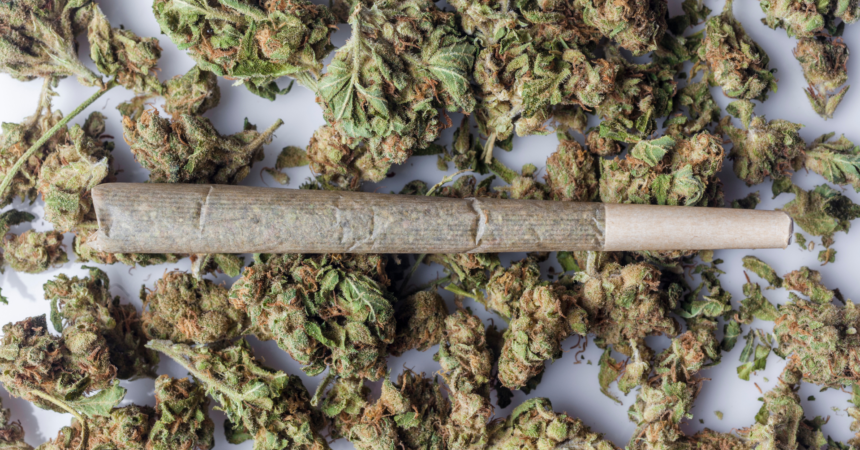Cannabis quality and grading is about much more than THC

By Allison Cohn
We recently asked Big Tree CEO, Eric Cozens, what having a high THC content meant for cannabis quality. He enthusiastically replied, “nothing!”
So why do people assume that high quality cannabis is all about that THC content? THC is definitely the most commonly referenced cannabinoid. How it became the most popular compound — out of over 100 of them! — likely has to do with its psychoactive nature. Its unpredictable tendencies intrigues us. It keeps us on our toes.
But there is so much more to cannabis than THC.
It’s like this — During prohibition, people wanted to procure booze with the highest alcohol content. They wanted the most bang for their buck. No one was making fine wines or craft beer during prohibition. They drank moonshine. If you’re looking to get hammered drunk, you want the product with the highest percentage alcohol. The stronger the stuff, the higher its perceived value.
THC in cannabis is similar to alcohol content in liquor, and if you’re looking to get turbo-baked off of one bong rip, you might want to seek out the bud with the highest THC content. In which case, there are numerous products dosed out with specific THC measurements to get you there. You can buy a 60% dab or a 90% vape cartridge in the extract section, if that’s what you’re after.
But with flower, it’s a different story. There’s not technically a “dosage.” How do you measure the THC you’re consuming in a bong hit versus a joint? How much do you smoke? How much do you remember smoking? Using THC as a metric to gauge the quality of flower just isn’t the best way to judge the product. It doesn’t really work that way.
FOR WELL BALANCED FLOWER, CONSIDER THE QUALITATIVE PROFILE
In most places where cannabis is sold legally, the THC content listed on the label of the product is all the customer really has to go by when assessing cannabis they’re buying. They are usually not allowed to smell or touch the product, and in some places they can’t even see it first. The perceived credence of the THC content is assigned more value, because that’s all they’re given to work with, but other factors should also be considered, such as the terpenes, trichomes, the makeup of your body and what works best for you.
Knowing the other attributes in cannabis that you like will be able to help you find agreeable flower more consistently, THC content be damned. Since it’s only required by law to put the THC content on the label, that’s what we think is elemental in determining whether or not we like this or that type of cannabis — but knowing about the whole cannabinoid profile is way more informative... and interesting.
BEYOND THC: THE ATTRIBUTES OF QUALITY
So what other cannabis attributes — aside from THC — should consumers care about when considering the quality of their product?
Aroma
The smell of cannabis is our translation of terpenes. The aroma tells you how well the terpenes were preserved throughout the curing and drying process. The aroma can range from diesel to fruity to Fruity Pebbles. Fresh, fully matured bud should have a powerful, pungent aroma. A sour or musty aroma can also alert you to potential defects from storage, such as mold. You can also tell if the bud was prematurely harvested by its smell, in which case it may smell more grassy or bland.
Color
This is another important indicator of freshness. Colors range from bright and vibrant to dull and muted, and are affected by how cannabis is stored and cured. Does it look alive? If so, it’s fresh and healthy. If the bud is neutral or monotone in color, it may be older, lacking in nutrients, suffering from light burn or stressed.
Structure
A plant’s structure reveals a lot about environmental factors that influenced it throughout its lifecycle, including nutrients and stresses. Healthy bud should be dense and pliable — but not wet. If the bud is airy, loose or crumbly (or mostly shake), that may clue you in to potential defects or stresses, like pests or fungus. Bud structure will vary based on the environment it was grown in, from indoor hydroponic systems with artificial nutrients (produces larger buds) to outdoor farms with natural sunlight (produces leafier buds).
Trichomes
You want your bud to taste delicious, right? Trichomes are like the flavor enhancers of cannabis. Healthy, yummy buds usually boast large, sticky, crystally trichomes. Less mature or sporadic trichomes on a bud could indicate improper growing, storage or processing. Oxidation may also cause discoloration of trichomes. You’ll see larger, more compact trichomes on cannabis grown indoors because the controlled environment allows buds to more fully develop.
It’s worth noting that outdoor cannabis often has smaller trichomes than indoor, but it can also be great. It will often test lower because of the way the cannabinoids organically grow outside (with exposure to wind and rain, etc.). This is neither good nor bad — just different types of bud.
Terpenes
These are the plant’s odor molecules and the ultimate indicator of freshness. Terpenes start to break down with oxygen, so this will reveal how the bud was stored, cured and handled along the way from the grower to the buyer to the consumer. Cannabis smells really great right after harvesting, but after a couple weeks in a jar or after being exposed to light, the quality can go down hill. The stronger the smell, the fresher the bud.
According to Cozens, “It’s all about preference. Many people have terpene bias. Some people like citrusy, bright, fruity terpenes. Some people like the gassy, skunky bud. It’s a personal choice. Being able to know what smells you enjoy will help you narrow down your preferred type of cannabis.” Depending on your taste, you can choose the bud that best suits your olfactory sensibilities.
GO FOR THE FULL PICTURE
Yes, THC potency testing is an important factor of the Fair Market Certification standardization and grading process (especially as it pertains to legal qualifications of hemp), but it does not provide the full picture in terms of “potency.” A full potency analysis will also measure the product’s full cannabinoid profile among other things.
Instead of relying solely on the product’s THC content, Cozens thinks it would be ideal if the customer could just interact with the flower themselves, saying, “That way, you could pick out terpenes that may or may not affect your body chemistry in different ways.”
Furthermore, full test results listing the various terpenes would benefit everyone. Cozens and his colleagues are working towards a more transparent future, where customers will have access to a QR code that they can scan to see a product’s full grading and lab results, including the panel of cannabinoids and terpenes for each specific flower. This process is already underway, providing seed-to-sale information to end users including grading data and more.
But since you’re not allowed to touch or smell flower at dispensaries in most states, and the QR codes aren’t available quite yet, your best bet is to educate yourself on the various cannabis attributes that make up your preferred type of bud.
The International Cannabis and Hemp Standards (ICHS) and grading process used by Big Tree aims to help consumers educate themselves about their personal cannabis preference by establishing consistency within the marketplace through a common language. If you familiarize yourself with the qualities of the product you enjoy, you should be able to find that type of product again and again from various farms and growers. If you know what medium, nutrient type and/or harvesting process you like, those are more reliable and comprehensive traits to look for in flower versus just THC content. For example, perhaps you like hand-trimmed, soil grown, outdoor bud versus indoor, hydroponic, machine cut bud. Being able to verbalize your cannabis preferences to a budtender will help them help you. Plus, it’ll definitely give you some street cred.

Allison Cohn loves gold spray paint and nonsense. She also has a very difficult time sitting still and keeping quiet. She can often be found dancing like a fool when she isn’t hiding out in her mountain lair or gallivanting around the globe.
